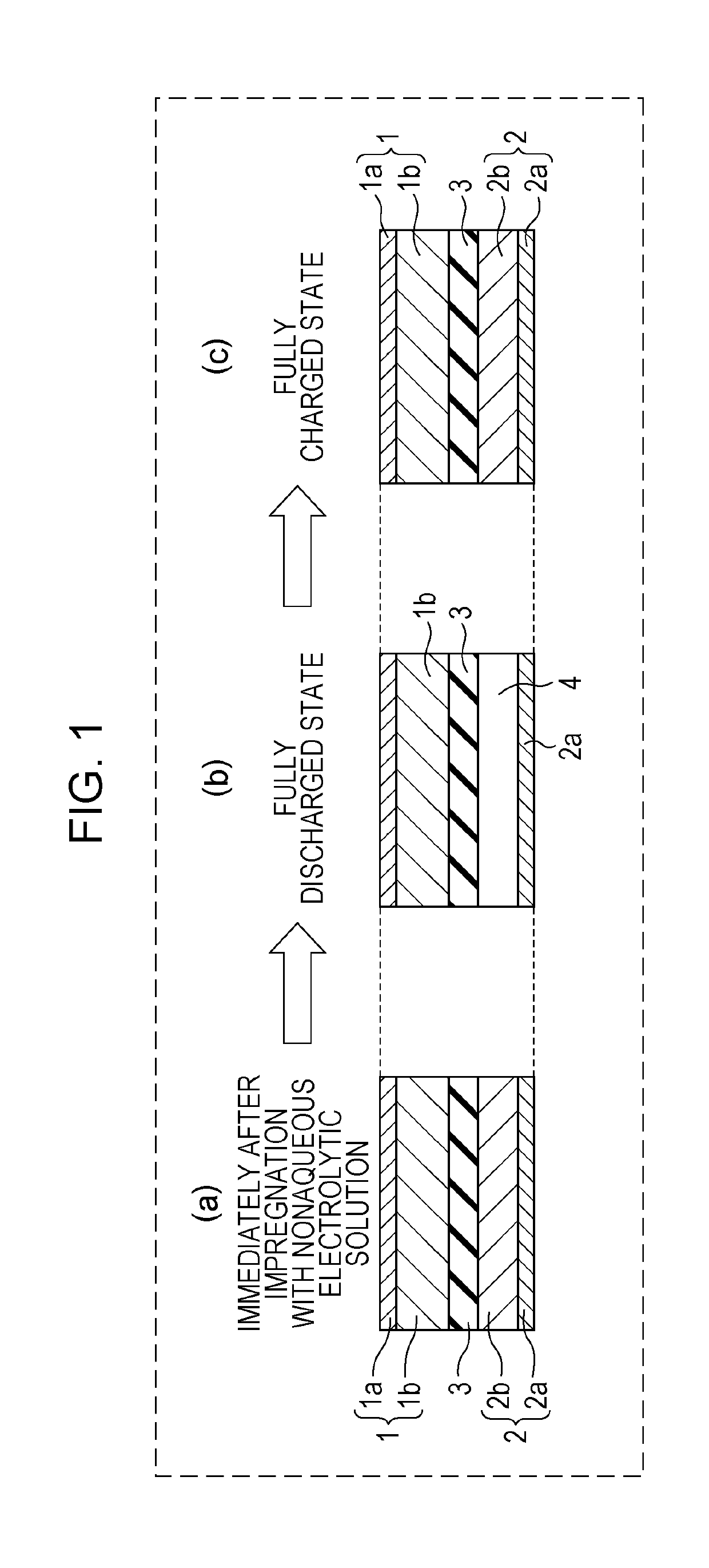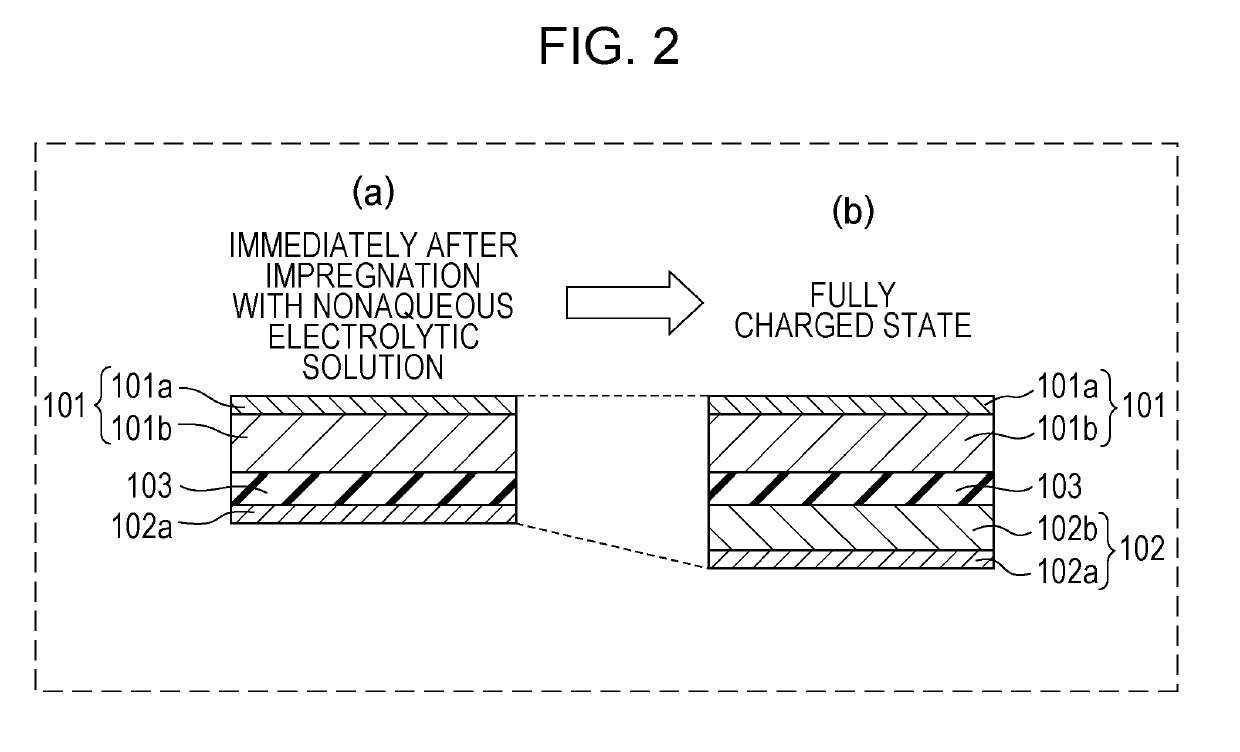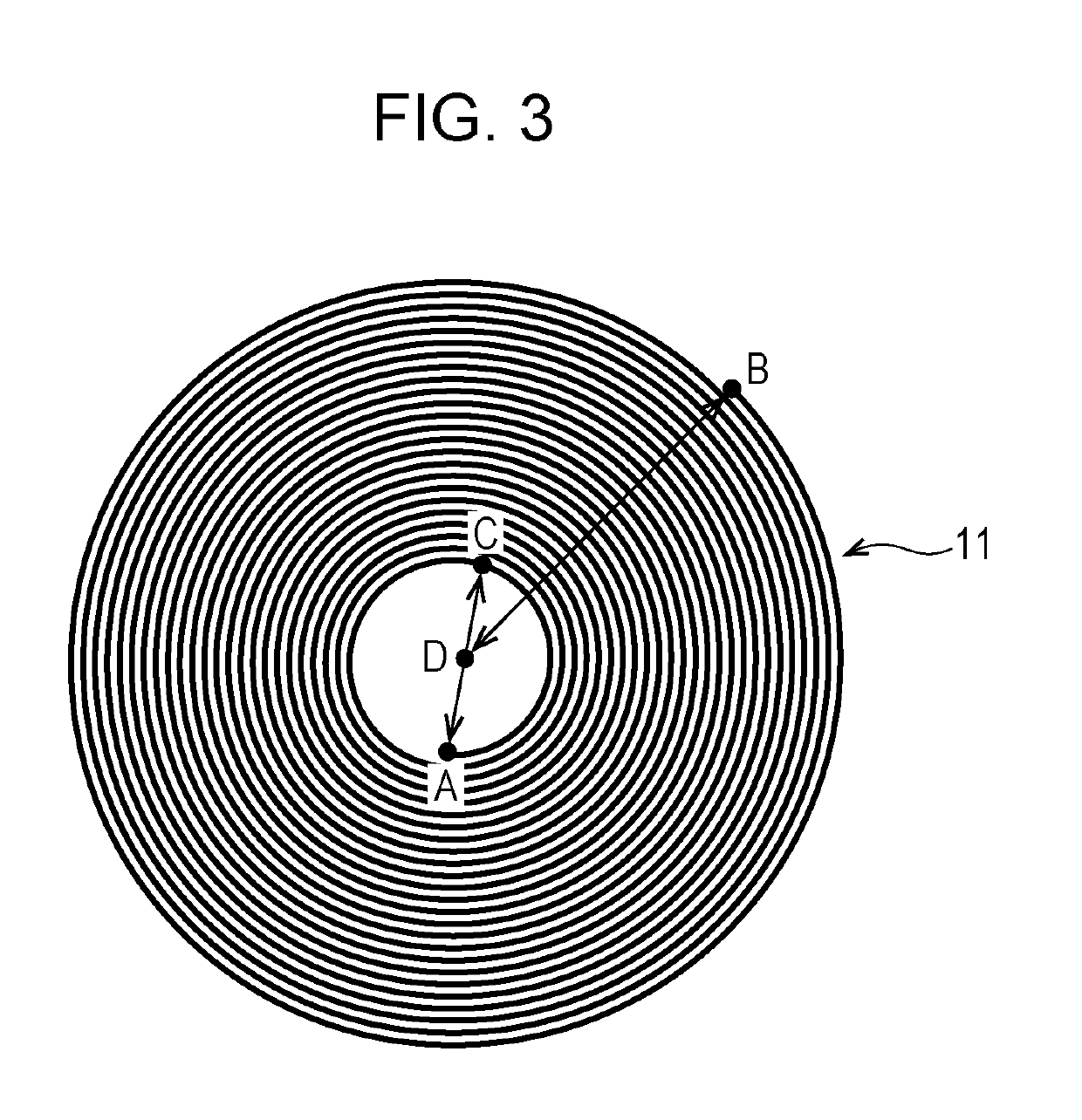Lithium metal secondary battery and method for producing the same
a secondary battery and lithium metal technology, applied in the direction of sustainable manufacturing/processing, cell components, climate sustainability, etc., can solve the problem that the capacity of lithium-ion batteries is reaching the limit, and achieve the effect of improving charge/discharge efficiency and charge/discharge cycle characteristics
- Summary
- Abstract
- Description
- Claims
- Application Information
AI Technical Summary
Benefits of technology
Problems solved by technology
Method used
Image
Examples
first embodiment
[0017]FIG. 1 includes schematic cross-sectional views of a part of an electrode group formed according to First Embodiment of the present disclosure in each state after impregnation with a nonaqueous electrolytic solution (hereinafter, may also be simply referred to as electrolytic solution) as a nonaqueous electrolyte. In FIG. 1, Part (a) shows a state immediately after impregnation with the electrolytic solution, Part (b) shows a fully discharged state, and Part (c) shows a fully charged state.
[0018]As shown in Part (a) of FIG. 1, immediately after impregnation with an electrolytic solution, the positive electrode 1 in the state in which lithium ions are extracted and the negative electrode 2 in the state in which lithium metal 2b is attached to a negative electrode current collector 2a are stacked with a separator 3 therebetween. The positive electrode 1 includes a positive electrode current collector 1a and a positive electrode mixture layer 1b formed on the positive electrode c...
second embodiment
[0028]FIG. 3 is a transverse section image of the positive electrode 11 of a fully discharged lithium metal secondary battery obtained by X-ray CT measurement. As the positive electrode 11, the negative electrode, the separator, and the nonaqueous electrolyte of Second Embodiment, the positive electrode 1, the negative electrode 2, the separator 3, and the nonaqueous electrolyte of First Embodiment described above can be used. In the image shown in FIG. 3, the start point of the inner circumference of the wound positive electrode 11 is denoted as point A, the end point of the outer circumference of the positive electrode 11 is denoted as point B, the point where the distance from the point A is the maximum in the first round on the inner circumferential side of the positive electrode 11 is denoted as point C, and the middle point between the point A and the point C is denoted as point D. The distance between the point A and the point C is denoted as I, and the distance between the p...
third embodiment
[0037]A specific embodiment of the present disclosure will now be described, but the following embodiment is merely a part of specific examples of the present disclosure and does not limit the technical scope of the present disclosure. The configurations of First and Second Embodiments can be applied to Third Embodiment.
Nonaqueous Electrolyte
[0038]The nonaqueous electrolyte includes a lithium salt. The nonaqueous electrolyte may be in a liquid form, in a gel form, or in a mixture of gel and liquid forms. A liquid nonaqueous electrolyte (that is, nonaqueous electrolytic solution) includes a lithium salt and a nonaqueous solvent for dissolving the lithium salt. A gel nonaqueous electrolyte includes, for example, a lithium salt and a matrix polymer or a lithium salt, a nonaqueous solvent, and a matrix polymer. The matrix polymer is, for example, a material that absorbs a nonaqueous solvent and thereby gels, and examples thereof include fluororesins, acrylic resins, and polyether resins...
PUM
| Property | Measurement | Unit |
|---|---|---|
| density | aaaaa | aaaaa |
| voltage | aaaaa | aaaaa |
| thickness | aaaaa | aaaaa |
Abstract
Description
Claims
Application Information
 Login to View More
Login to View More - R&D
- Intellectual Property
- Life Sciences
- Materials
- Tech Scout
- Unparalleled Data Quality
- Higher Quality Content
- 60% Fewer Hallucinations
Browse by: Latest US Patents, China's latest patents, Technical Efficacy Thesaurus, Application Domain, Technology Topic, Popular Technical Reports.
© 2025 PatSnap. All rights reserved.Legal|Privacy policy|Modern Slavery Act Transparency Statement|Sitemap|About US| Contact US: help@patsnap.com



